Projects — Ongoing
Chestnuts and their many uses
Beyond the nut itself (technically a fruit and nutritionally more similar to cereals), chestnut trees provide an array of useful resources.
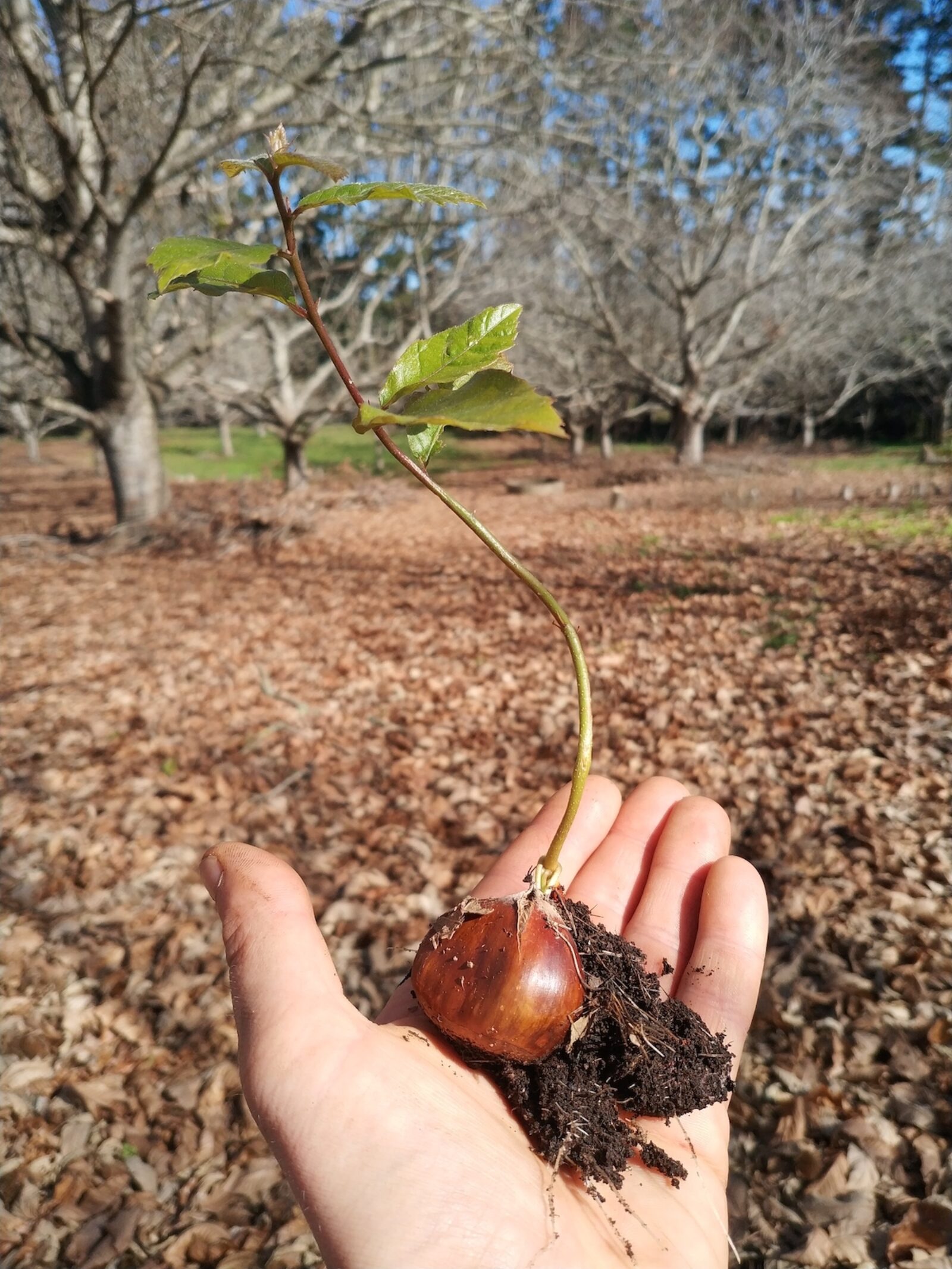
Developing a food forest adjacent to 90-100 mature chestnut trees continues to pay dividends. For the first year on this land the primary resource derived from the trees has been copious amount of carbon rich wood mulch processed on site and readily loaded around various fruit trees and temporary garden beds. As we've moved through the seasons it's become apparent that these trees and their free seeded siblings provide constant opportunities.
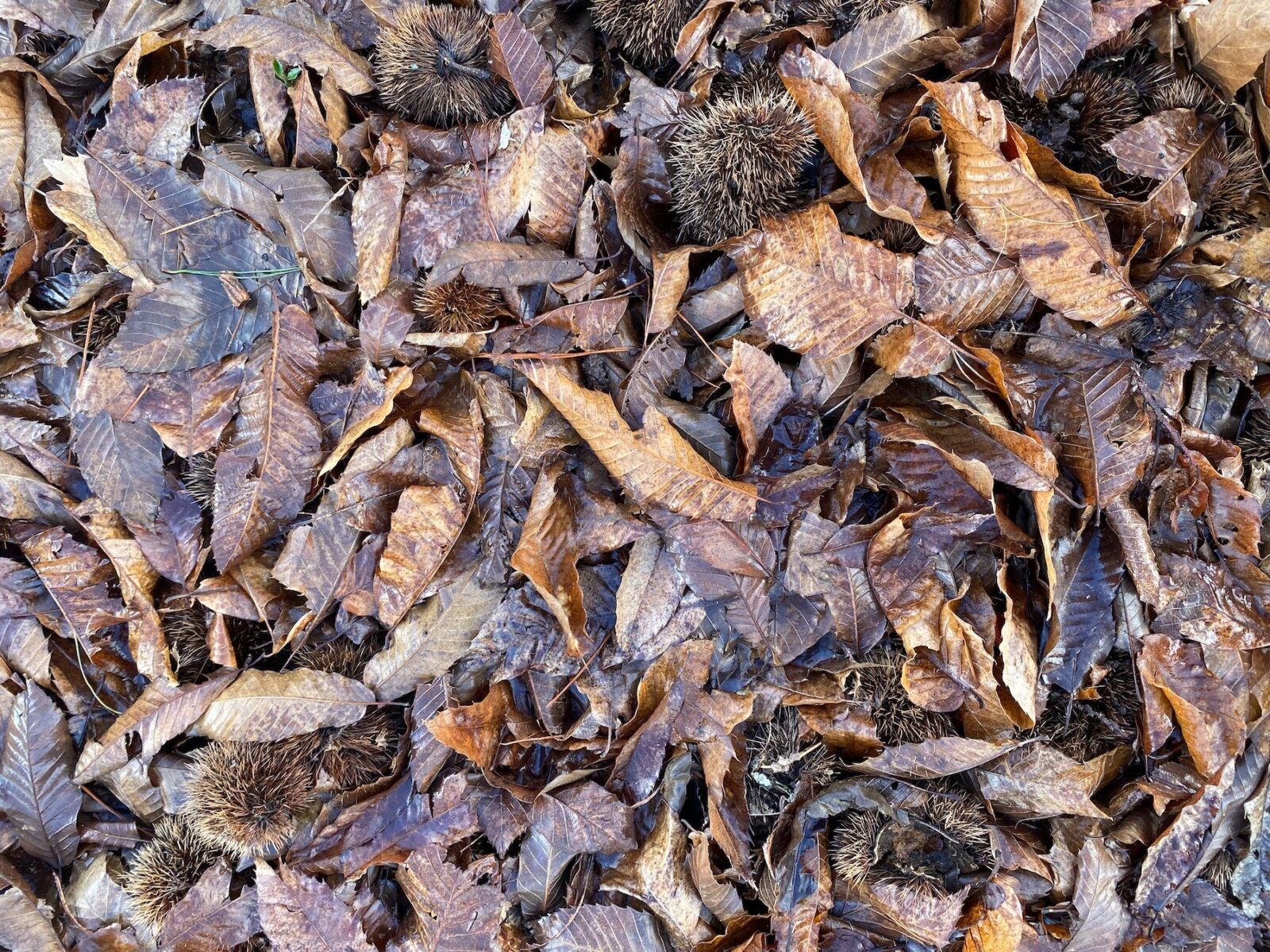
As with any deciduous trees, autumn/winter is signified by a huge leaf drop. For me, this is the easiest mulch that I can take advantage of! Whether it's simply collecting them and using them in a similar fashion to wood mulch or my favoured method, collecting bundles in used hessian coffee sacks to rot down. This creates a rich, microbial potent decomposition that I can use at anytime convenient. I keep these sacks off goodness piled away under dark and damp trees, the relatively low density compared to wood mulch means the leaves break down substantially quicker, providing plant soluble nutrients in a shorter time period.
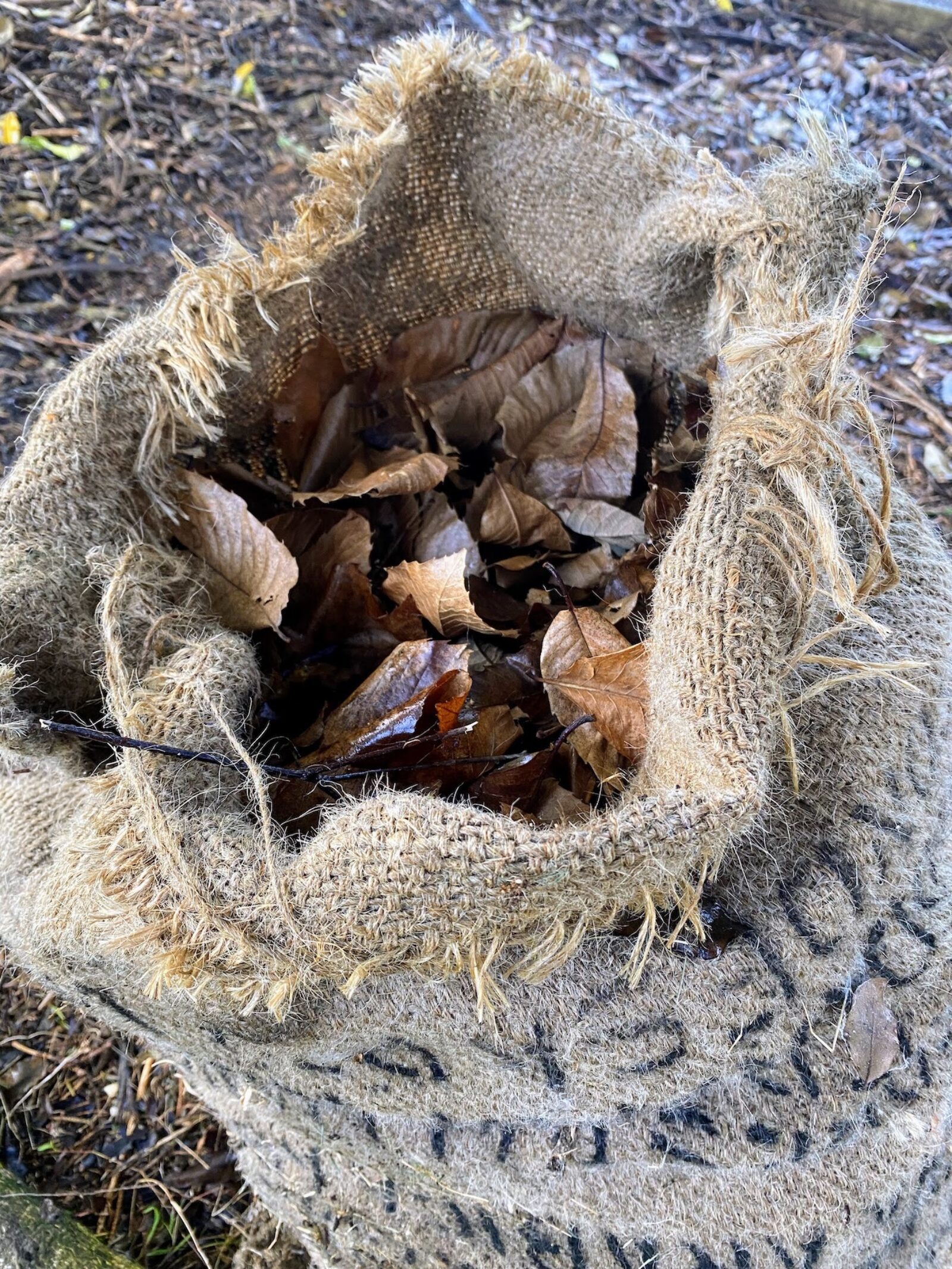
On the opposite side of the spectrum I've begun using the dense, fast trunk growth of the free seeded chestnuts. I'm using these heavy, somewhat straight lengths on the contour of the land within the fruit orchard to form on-contour garden beds. The first of which have been filled with their first crops and tied into the existing old structure fruit trees.
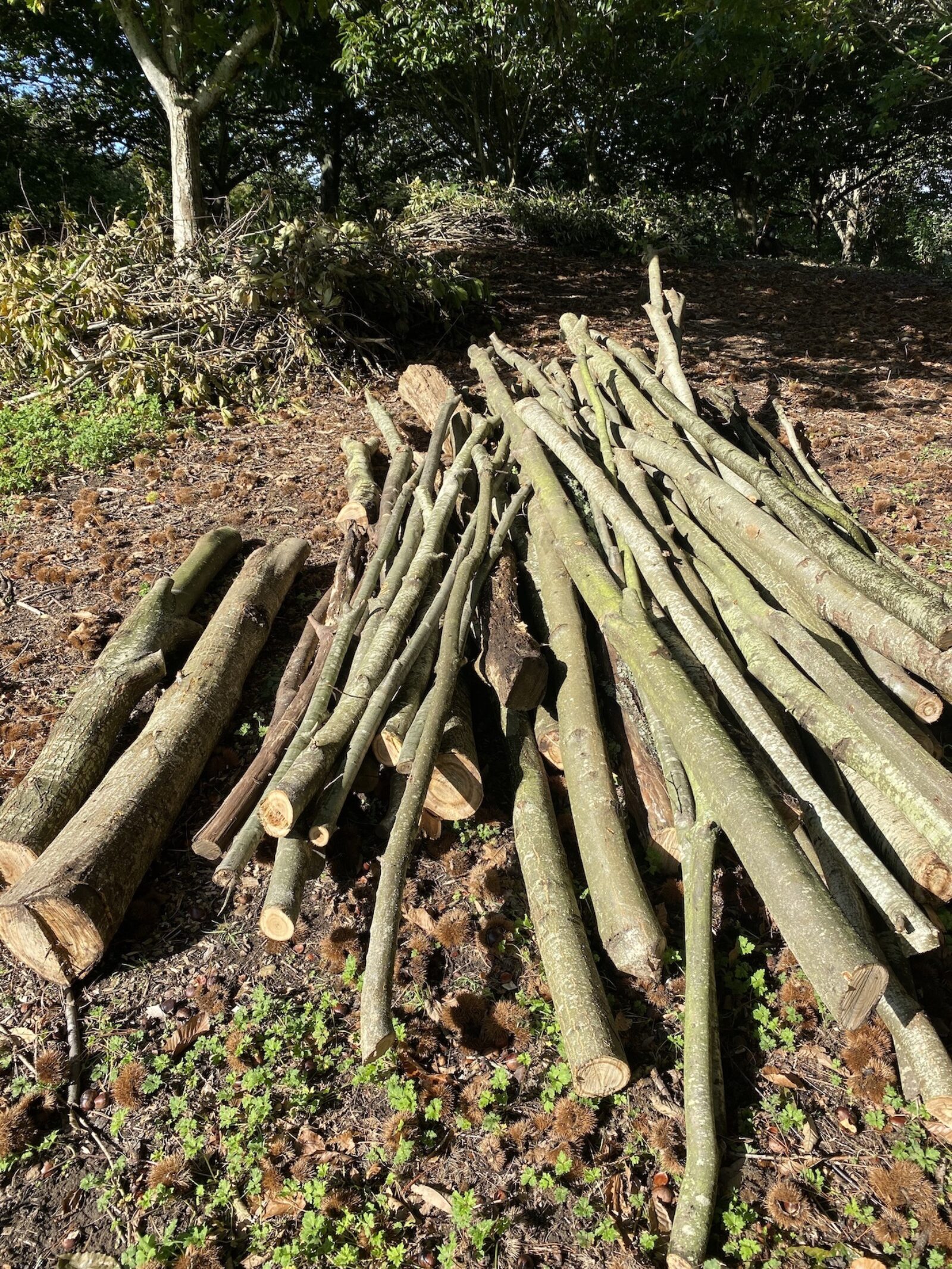
The composition of the beds themselves isn't entirely chestnut based but still a thing of beauty. With each terrace I'm experimenting slightly with the process, but in general I'm layering with cardboard, hessian sacks, larger rotting wood mass, spent mushroom growing medium, stick/leaf mulch, cow/chicken manure and of course home made compost (also thanks in big part to the chickens).
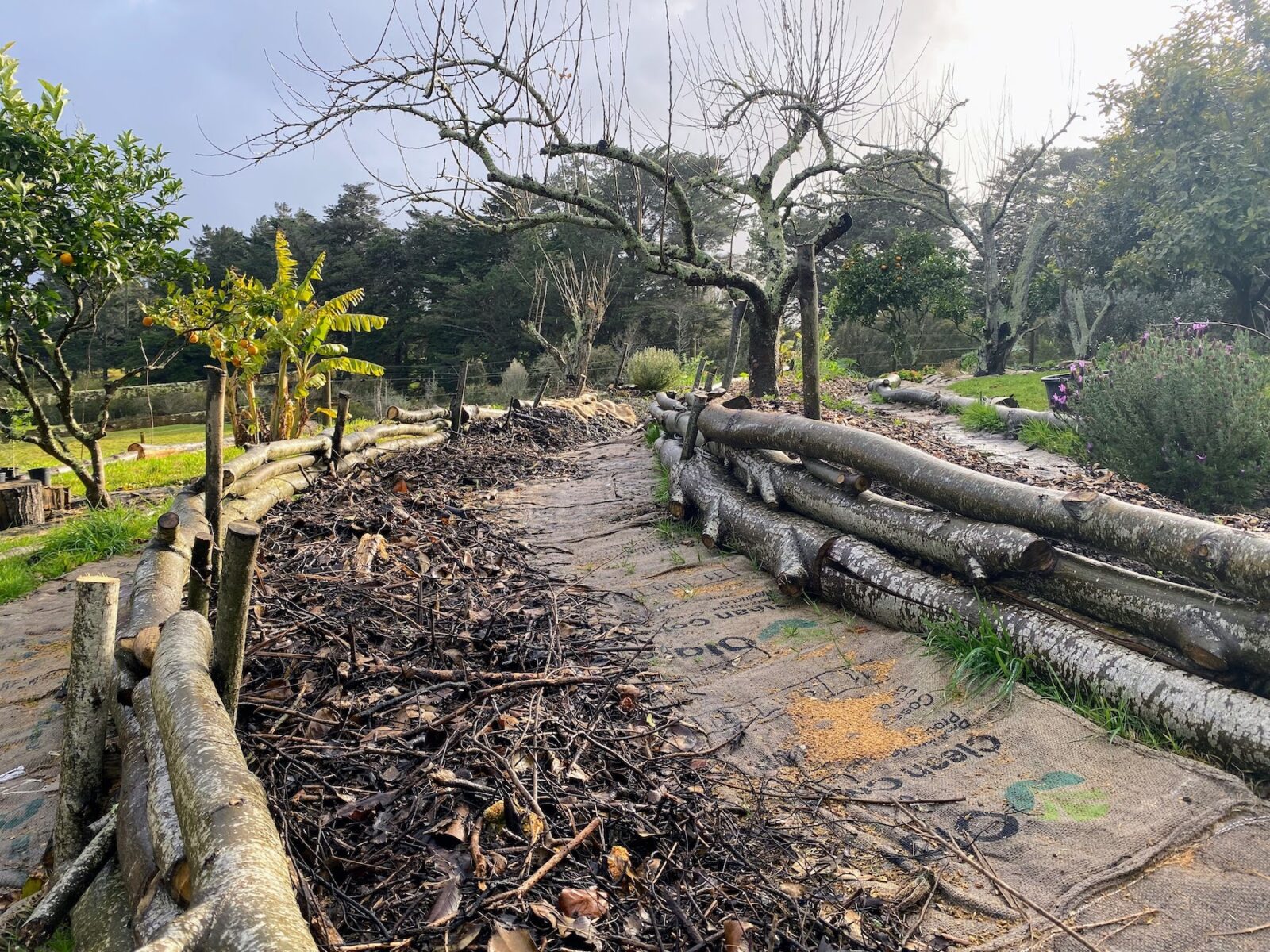
The spinoff of using this abundance provided by the chestnuts has meant that by association I've crown lifted and cleared a huge mass of dysfunctional growth on the mature chestnuts, removed thousands of invasive species from within the orchard and cleared masses of tightly packed free seeded chestnuts that were causing problems for the established chestnut trees. While most of these free seeded specimens are undesirable I have kept a solid grouping that will grow on and be used continually as coppice wood for various organic projects.